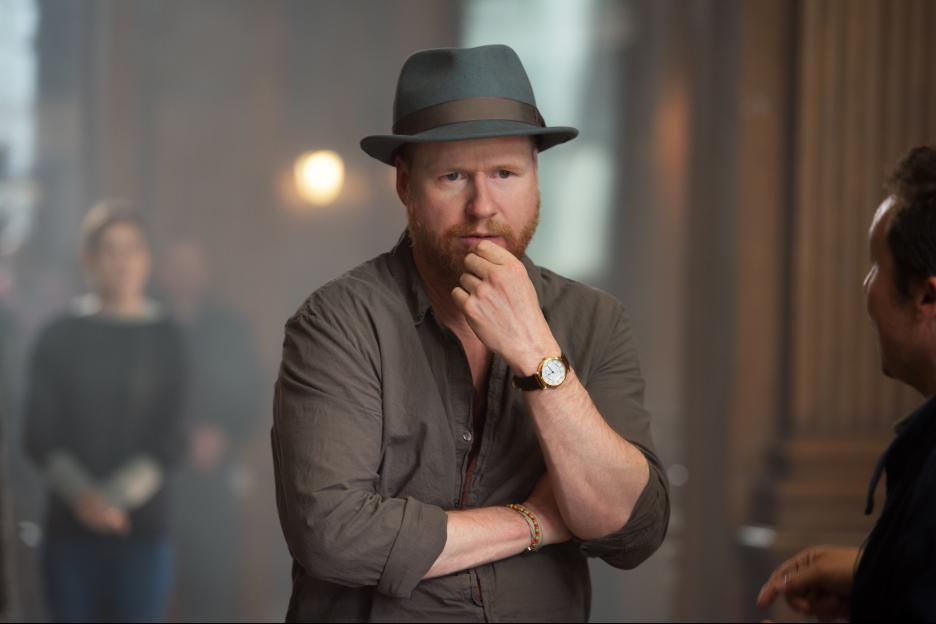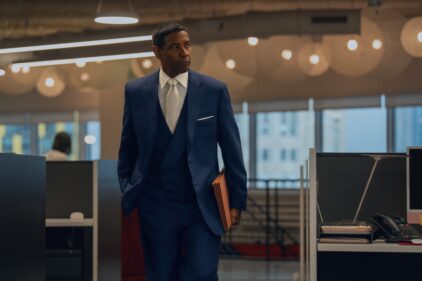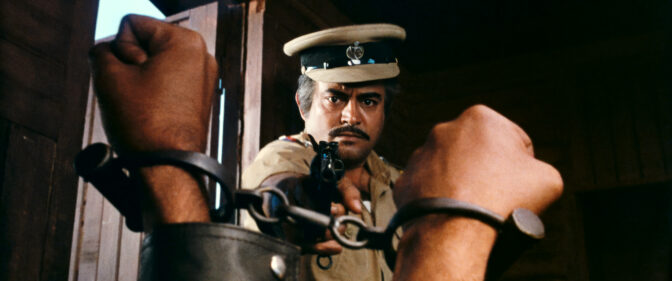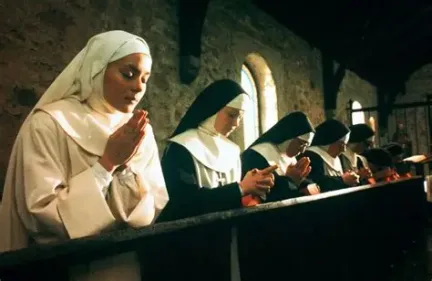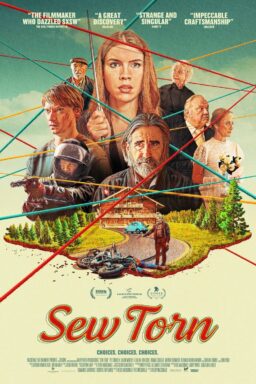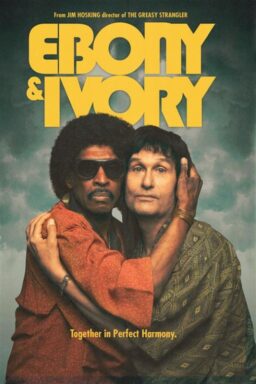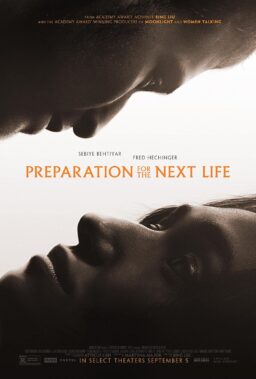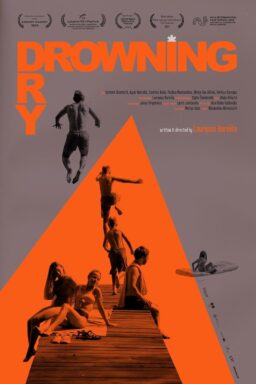It
was early 2004, and I was sitting with some fellow graduate students at an
outdoor table at the Market Street Pub in Gainesville, Florida (one of the glories
of Gainesville was that you could sit at an outdoor table in
January or February). Somehow, the subject of comics came up. We talked about
the characters, creators and titles that we’d loved as kids, and my friend
Roger asked me if I still read superhero comics, as he did. “Not
really,” I replied. “I guess Joss Whedon‘s work fills whatever need
in me those comics used to fulfill.”
At
the time, Whedon’s “Angel” was in its fifth (and, fans would soon
discover, final) season on the WB, and its parent show, “Buffy The Vampire
Slayer,” had ended the previous May. I was a huge fan of both (as well as
a more subdued fan of Whedon’s “Firefly,” the Fox cult sci-fi show
that had run for a single season in 2002-2003, in a disjointed fashion mandated
by the network). I had been a latecomer to the Joss Whedon television party—I
didn’t start watching “Buffy” until its fourth season, turned off by
the title, the original movie version, and what I thought were the silly
billboards for the show that dotted the streets around my workplace in Chicago
when “Buffy” debuted in March 1997. We watched a fourth-season
episode (the Spike-centric “Harsh Light of Day”) for a graduate class
in the fall of 1999, and I was hooked right away, drawn to its sharp writing
and witty wordplay, tongue-in-cheek acting, sensuous colors, and melodramatic
scoring (cinematographer Michael Gershman and composer Christophe Beck, both of
whom would be nominated for Emmys for their work on the show, were always its
secret weapons). But there was something else to it—I immediately recognized,
from the look and tone of the thing, that Joss Whedon was a fellow Marvel nerd.
It
seems obvious—both “Buffy” and “Angel” are, at heart,
superhero tales (and Whedon’s later work, like “Dollhouse” and
“Dr. Horrible,” would also explicitly draw on the narrative tropes
and iconography of the genre). But it wasn’t just the generic trappings, or even
the expertly arced seasons (with skillful weaving of character and action that showed
that someone had really absorbed the lessons of Claremont and Byrne’s
“Uncanny X-Men”): It was a certain sensibility, a worldview that was
part geek investment and part distanced meta-commentary, where the artist is
offering a knowing intertextuality for those who want it, without ever breaking
the spell cast by the romance, color and action. This was the trick Stan Lee,
Jack Kirby, and Steve Ditko perfected in the mid-sixties with the original
“Marvel Age of Comics,” and it’s been carried on by generations of
skillful writers, artists, and editors in the fifty years since: by
deconstructing the clichés of comic book storytelling, they let the reader into
the creative process in a manner that actually enhances the investment. Once
those clichés are cast aside, and replaced with something more contradictory
and deeply human, the reader’s attachment to an interconnected fictional
universe can become far more intense. It was this quality—to make the fantastic
real, the serious funny, and the tragic addictive—that Whedon carried with him
into TV, and subsequently into his film work at Marvel.
As
the saying goes, there’s no believer like a convert, and I quickly caught up
with Whedon’s past “Buffy” and “Angel” work via DVD and
borrowed videotapes (another reminder of my comics-reading days: the thrill of
the hunt, the insatiable desire to read or see everything). When I
pitched this piece to the editors of RogerEbert.com, I thought, “Oh, ten
episodes that show the superheroic influence on Whedon’s work, no
problem”. As I sat down to make a list, I quickly started to weep at the
impossibility of the task. I’ve managed to narrow it down to six, with eight
more short recommendations, and the caveat to the reader that he or she should
really watch all of Whedon’s TV work—it’s easily accessible on a variety of
disc and streaming formats, and its greatest impact comes from seeing how it
all flows together into one great, humanist saga about the need for community.
And portable missile launchers.

1)
“Becoming, Pt. 2” (“Buffy the Vampire Slayer”)
As
the superhero movie has become the dominant genre of American summertime
moviegoing over the last decade, there have been occasional attempts to both
canonize and defrock the form via critical comparisons to other storytelling
modes: the science fiction epic, the Western, the gangster picture. Like any
good mutant, “superhero movies” (actually a genre as disparate in
styles as any other) draw on all of these, but I’ve always felt like the
comparisons missed the mark. For me, the clearest comparison is with the
musical, which has an emphasis on color, light, physical movement, iconic
costuming, and gloriously excessive spectacle-for-its-own sake that makes it
the superhero’s natural forebear.
“Musicals
were my absolute bread-and-butter,” Joss Whedon mentioned in a 2007
interview with The Onion AV Club. “A lot of people didn’t know that,
because I love horror movies, and I love other things.” That influence is
there even when the singing is not, as in the climactic scene of this
“Buffy” season finale, as the titular heroine battles one-time
paramour Angel (now reverted, due to a loss of his soul, to his original, evil
form of Angelus), attempting to stop him from sucking the world into hell via
the dark god Acathla. Bear with me here, because anything worth watching can’t
have its impact summed up in a simple, vaguely ridiculous plot summary: that’s
another thing that “Buffy” has in common with everything from
Sondheim’s “Follies” to the “Fantastic Four.” As Buffy and
Angel carry on a sword-fight duel in a garden, Buffy sidekick Xander stages a
rescue of their mentor Giles, best friend Willow attempts a tricky magic spell
from her hospital bed, and free agent vampire Spike plays all sides against one
another (tossing off quips all the while), I’m taken with how much it feels
like a musical.
From
the cross-cutting between spaces, cut in expert counterpoint to Christophe
Beck’s scoring; to the flashes of color and light off the swords and the
greenery of the garden; to the combination of dolly shots on Willow’s face with
pans and overhead crane shots that evoke “West Side Story” and the most feverish products of the Freed
Unit; to the fight scenes that feel like Errol Flynn, filtered through the 1948
musical “The Pirate” (and filtered again through the canted panel
spaces of “Spider-Man comics”); to the mise-en-scene of
greenery/drapery/greenery/drapery, as if Vincente Minnelli dropped by to dress
the set—all of it weaves together to create a dizzying sublimity that’s like
something out of Jeffrey Cordova’s wildest dreams (asked once for his favorite
film musical, Whedon wisely said, ” ‘The Band Wagon’ kicks ass”). All
it lacks, of course, is a song, but it’s this kind of non-singing musicality
that Whedon will deploy in the climax of “The Avengers,” as a long
take carries the viewer across the city, following the tail of a gigantic space
monster, and the superheroes attempting to destroy it, moving together in
perfect time.

2) “Dr. Horrible’s Sing-Along Blog”
“I have so many superhero puns, and no use for them! You
can’t leave me behind!,” writer and director Ben Edlund yelled at Joss Whedon
while the two were on picket lines during the Hollywood writers’ strike in
2007, after Whedon had told the creator of “The Tick” about his idea
of doing a web-based TV series that would musically parody superheroes. It had
begun when Whedon and his brothers found themselves recording commentaries, on
a lark, for the old home movie parodies Whedon made in film school. He had
thought about doing a weekly podcast, which would tell an inverted superhero
story from the point-of-view of an incompetent and madly romantic
super-villain, and which would feature a song each week. When the writers’
strike hit, Whedon found himself talking to the writing staff of “The
Office,” who were developing webisodes, and thinking about “New
Voyages,” a web-only fan series about the original Star Trek crew that
debuted in 2003, and whose streaming capabilities Whedon was very impressed by.
Edlund,
also a former staff writer for “Firefly” and “Angel“
(where he directed the brilliant Muppets parody episode, “Smile Time”), pitched
the villain Bad Horse and his sidekick Moist, and then disappeared. Whedon,
along with his brothers Zack and Jed, and writer/actress/producer Maurissa
Tancharoen, would write the script and produce the songs for “Dr.
Horrible,” a three-act, free Internet program that ran online from July
15, 2008-July 20, 2008. Written in a month and shot in six days for $200,000
(which Whedon himself provided), the show crashed its server due to demand,
spun off a soundtrack album, was made available on iTunes and eventually
released on DVD before finally finding a home on Whedon’s old network, the CW.
Of
all the shows under discussion, it’s “Dr. Horrible’s Sing-Along Blog”
that most reflects the ethos of the show musical, both on-screen and behind the
scenes. Its DIY ethos—the speed of its production, the homemade iron-on
costumes, the images shot on iPhones, the songs written and recorded in a home
studio, and above all the idea that it was mostly family, friends and former
staffers at Whedon’s Mutant Enemy company that were involved—is very much the
“fix up the barn and put on a show!” aesthetic in action. But its on-screen
story is also very much that of a show musical, and extends the show musical as
a communal form back out to its audience.
Dr. Horrible’s problem (given poignancy by Neil Patrick
Harris’s pitch perfect performance) is that he fails to understand the various
mechanisms within which he’s trapped himself, and thus can never create the
mystique of “stardom” that a good villain needs. He uses his blog as a
performative, promotional tool and personal diary while forgetting it is a
public space (almost like a theater with no backstage), thus allowing his enemy
Captain Hammer (a super-hammy Nathan Fillion) to know his every move. He can
build technology, but doesn’t use it well, preventing his acceptance into the
League of Evil. And he can sing to himself of his love of Penny (Felicia Day),
the girl at the laundry, but can’t speak it (an ironic reversal of the problem
musicals often present). Hammer, on the other hand, does nothing that doesn’t
seem calculated, and yet has tremendous success—in musical terms, he’s Lena
Lamont. As Whedon says of Hammer, “There’s no Clark Kent”—no “real” identity
that the traditional superhero might hide behind, no underdog with whom to
identify. Dr. Horrible wants the courtly love that’s a characteristic of the
musical, but can’t achieve it, and Penny remains frozen as an ideal in his
mind, rather than a person—she’s an object of voyeurism (“with my freeze ray I
will stop the world,” he sings, not realizing that’s the whole problem);
meanwhile, the intertwined love triangles end tragically rather than happily,
reversing the trajectory of a typical backstage show.
“Dr. Horrible’s” ultimate impact wasn’t just
aesthetic—although it’s delightful—but systemic: during a writer’s strike with
a major sticking point being residuals from the growing internet and DVD
market, “Horrible” showed that creators with strong fan-bases could
use these new spaces to successfully pitch original product (a foreshadowing of
Netflix, Amazon and Yahoo! original programming). And more importantly, it was
a reminder that the act of creation doesn’t stop with the show—just as comic conventions and comic fan culture arose in the sixties and seventies as their
own creative (and eventually commercial) spaces for enthused consumers, so too
did “Dr. Horrible” inspire intense fan devotion—almost immediately,
viewers began designing costumes, holding conventions, writing fan-fics, and
organizing sing-alongs. Perhaps one way to kick off the larger conversation
about the relationship between musicals and superheroes is to acknowledge
that—beyond the costumes, the campiness, the body images, the choreography,
color and movement—one thing they share is the potential for constant renewal
and re-telling by a passionate fan culture. In the end, it doesn’t matter
whether there is actual singing on the screen to accompany our brightly colored
heroes, because the song is what we bring to it—the song is you.

3)
“Our Mrs. Reynolds” (“Firefly”)
Fillion
had previously made two other appearances in Whedon projects—as the
villainous Caleb in Season Seven of “Buffy,” and as Mal Reynolds, the
(at least occasionally) heroic lead of Whedon’s “Firefly.” Set in
2517, in a post-civil war environment dominated by a U.S./Chinese fused
superpower called “The Alliance,” “Firefly” tells the story
of a group of ex-soldiers (from the losing side of the war), mercenaries, and
other misfits aboard the spaceship Serenity (later the title of the post-series
feature film), on the run from the Alliance and making their living as traders,
salvagers, escorts, and thieves. Loosely inspired by Whedon’s reading of
Michael Shaara’s Civil War novel “The Killer Angels,” it was his
attempt to blend the science fiction movies and TV shows he’d grown up loving
with, in his words, “a ‘Stagecoach’ kind of drama, with a lot of people
trying to figure out their lives.” Its bizarre treatment by Fox—who chose
to begin the show by airing “The Train Job” (an episode designed for
the middle of the run) as the “pilot,” while not airing the actual
two-hour pilot until mid-way through the run—culminated in a mid-season
cancellation, and the show found its real audience on DVD, where it became a
large cult hit. This martyred existence gives “Firefly” a special
glow for certain parts of Whedon’s fan-based, and it also feels kind of poetic,
given the ways in which the show’s characters so clearly embody the central
tenet of all of Whedon’s TV work—”Nothing we do matters, so all that
matters is what we do.”
In
“Our Mrs. Reynolds,” Mal finds, in best Marvel superhero style, that
a single act of kindness can lead to all kinds of headaches. He and crewmates
Jayne (Adam Baldwin) and Zoe (Gina Torres) rescue a covered wagon from bandits,
and after he dances with Saffron (Christina Hendricks) that evening, he finds
that he’s now “engaged” to her, at least according to Saffron. But
what begins as screwball comedy, with Saffron playing “housewife”
aboard the ship, quickly turns into something darker and more action-driven,
without losing a touch of humor. Imagine Spider-Man and the Black Cat in space,
and you have some sense of the unfolding narrative, played with sharp chemistry
and exquisite timing by Fillion and the eternally-underrated Hendricks.

4)
“Ghost” (“Dollhouse”)
The titular
setting of “Dollhouse” sports a layout that feels both modern and
traditional—it’s a sleek set of concentric circles, polished wood and gleaming
metal that’s enveloped in shadow, and lit from above and the side by
halogen-like panels that glow like Japanese lanterns (this Asian influence can
also be seen in the neon-lit night-club that our heroine, Echo, dances in
during this episode’s pre-credits sequence: its lovely pink pillars and
lampposts look like something out of manga). As Echo walks in front of them in
the screen shot to the left, they almost look like out-of-order Tetris pieces,
fragments that can be re-ordered depending on the specific game one is playing.
In that sense, they offer a clue to the overall design of the show (whose
constantly shifting narrative parts and tones ask the viewer to take a more
interactive stance) and the generally mixed critical response “Dollhouse” received.
Questions of
memory and identity are built into “Dollhouse”‘s narrative concept.
Echo (Eliza Dushku) first appears in the pre-credits sequence as a scared and
hopped-up young woman. Echo is promised a mysterious “clean slate” by
Olivia Williams’ wonderfully oily Ms. DeWitt, and we flash-forward into her new
life as a “doll,” a marketable commodity rented out for various
fantasies (or what DeWitt euphemistically refers to as
“appointments”), and here seen seducing a man in a night-club. She
flirts with the man and then skips out into the daylight (her transition from
the dark club to the sunshine mediated by those neon pillars I mentioned
earlier), where a van picks her up and returns her to the corporation. Her mind
is wiped, and she becomes the blank vehicle for her next assignment, which
turns out to be a hostage crisis.
All of this
happens in the first ten minutes of the show, and I’ve only described about
half the action. That’s a lot to absorb, particularly given Whedon’s almost New
Wavish editing patterns, which are full of sharp breaks and ellipses.
“Dollhouse” had a famously difficult gestation and this episode was
actually the show’s second pilot. Reports suggested that Fox wanted something
that more clearly outlined the show’s direction and offered viewers clearer
introduction and exposition.
They got that—by
the end of the first hour, we’ve been introduced to many of the major players
and the overall concept—but this is still a much denser visual and narrative
weave than earlier shows like “Buffy” or “Angel.” There’s a
fascinating rhythm between long shot (often used as eerie punctuation, as when
we see the doll beds from overhead) and tight close-up or medium shot: the
wider view offers quick views of dense and fascinating spaces, while the
close-up takes away our ability to see the space around the characters,
enhances the sense of disorientation and claustrophobia that Echo feels.
“Dollhouse”
didn’t last long, and is generally the least-loved of Whedon’s TV shows, but I
find its more complex take on style and character heartening, not least because
it seemed to force Whedon out of his usual love affair with the Nerd Paradigm,
in a manner that lead to the more interesting, dark heroism of Black Widow and
Hawkeye in Whedon’s “Avengers” films. An example of this Nerd
Paradigm appears in every Whedon show, most famously the character of Willow
Rosenberg on “Buffy.” It’s functioned as wish fulfillment for both
Whedon’s writing staff and a wide swath of his audience; but what initially
feels like a fun break with stereotypes just ends up creating a new set of them
along different prejudicial lines, as what once felt like a broadly textured
set of characters has sometimes ended up boilING down to more singular
definitions of “heroism,” which end up pandering to their audience in
depressingly familiar ways.
Examples of
the Nerd Paradigm pop up in “Dollhouse,” too, but the geeks here feel
menacing, imbricated into the corruption of the Dollhouse with everyone else
(Fran Kranz is quite wonderful as the house’s resident genius—he can seem by
turns charming and arrogant, just a few steps away from complete psychosis).
The scars on Amy Acker‘s face in “Ghost” speak to something more
textured, mysterious and damaging at the heart of the paradigm, at once
sympathetic and a bit alienating.

5)
“City Of” (“Angel”)
Two images
dominate the first season of “Angel”: The first, from the pre-credits
scene of this episode (the show’s pilot, an image later captured for the show’s
credits) shows our titular hero—a vampire with a soul who fights for good in
order to atone for past sins—staking two vampires and stalking off into the
night, his long leather duster swirling behind him. Framed by a dirty,
shadow-strewn alley, Angel seems the embodiment of Raymond Chandler‘s noir
detective: “down these streets a man must go who is not himself mean, who
is not himself tarnished nor afraid….He is a lonely man and his pride is that
you will treat him as a proud man or be very sorry that you ever saw him.”
The second, quite different image is distinctively unproud,
as Angel (David Boreanaz) imagines himself dancing at a friend’s party. Cut to
Boreanaz doing…well, the dorkiest dance ever, full of arrhythmic arm
movements, regrettable hip sways, and a positively Marmaduke-like tongue
flapping through his lips. Flashing back to reality, Angel says, completely
deadpan, “I don’t dance.”
Somewhere
between those two images—the first full of epic darkness and danger, the second
oozing humorous satire—lies the tone of this “Buffy” spinoff.
Initially far more “stand-alone” in its episodic structure than
“Buffy” (which would quickly change in the coming years), there’s
clearly a lot of feeling around going on in its initial year, as co-creators
Whedon and David Greenwalt try to figure out to dance to the beat of this new
song they’re playing, desperate to look more like the cool avenger than the
dancing fool. It takes about half-a-season, but they eventually find their
rhythm, and the end result is arguably the most underrated thing Joss Whedon
ever did.
After
reaching a perfect closure to its first, high-school based half,
“Buffy” saw the departure of three seemingly minor figures at the end
of season three—Cordelia (Charisma Carpenter), the sarcastic school princess,
forced to work as a secretary after her parents were indicted on tax fraud;
Wesley (Alexis Denisof), the oafish Watcher who generally caused as much
trouble as he prevented; and Angel, Buffy’s paramour/arch enemy. All three wind
up in LA, where Angel opens a supernatural detective agency and, aided by
Cordelia, Wesley, and the mysterious, vision-prone Doyle (Glenn Quinn), fights
the demons and lawyers Raymond Chandler never could have dreamed of.
In Angel,
Whedon created his own Tony Stark—an arrogant rich boy brought low by
circumstance, and attempting to redeem himself for past sins while keeping his
ego and addiction in check. And even moreso than in the more corporately
constricted confines of the Marvel movies, Whedon here has crafted the
perfectly balanced, Marvelesque super-team. Anyone who picked up an Avengers
comic in the 70s and 80s (when Whedon’s sensibility was forming) would
recognize the archetypes. Cordelia is Whedon’s Janet Van Dyne, a heroine whose
fashion sense and surface ditziness conceal a fierce toughness and striking
intelligence; Wesley is Henry Pym, the brilliant-but-tragic hero whose attempts
to do good are so often thwarted by his own insecurities. Later seasons will
see the team enhanced by the additions of Gunn (August Richards, who also turns
up in the “Agents of S.H.I.E.L.D.” TV show), the sensitive muscle of
the group, and Fred (Amy Acker), a sweet-but-psychically scarred physics
genius. Even more than “Buffy,” “Angel” is about the
absolute pains and absolute necessity of family, in all senses, and its
willingness to go dark and deep gives it an epic feel that’s actually more
cinematic than any of Whedon’s films.
Much of that
is in the show’s future, though—in this pilot, Whedon and Greenwalt are still
having fun playing with and parodying the Batman model they clearly adore. From
Angel’s stoic brooding, to his underground lair, to the plethora of gadgets he
brings on his first big mission (all of which, pointedly, fail him),
“Angel” suggests how easily the superheroic paradigm could translate
to network TV. Just don’t ask him to dance.

6)
“Innocence” (“Buffy”)
So,
now we come to the missile launchers. We also come to the absolute, single best
episode of any of Whedon’s TV shows. I started watching “Buffy The Vampire
Slayer” during its fourth season, and became truly a convert during its
sixth (a brilliant piece of darkness and longing that’s still mistreated by
fandom). But it was while catching up with this episode via DVD, in the summer
of 2002, that I stared at the screen and said out loud, “This is the
coolest thing I have ever seen.”
Okay,
that’s something of an exaggeration, but the episode that inspired it remains
the high-water mark for the show, and a landmark in terms of its relationship
to its then-network, the WB. The WB was made possible through FCC deregulation
of what were known as “financial interest and syndication rules” (or fin-syn),
which prevented the sorts of media conglomeration that would allow networks to
own the products they aired. Steadily weakened throughout the 70s and 80s, they
were abolished in 1993, an abolishment enhanced and codified by the
Telecommunications Act of 1996, an act of corporate integration that was
occurring just as the television audience was fracturing to a remarkable
degree. When the WB launched in 1995 (owned by Time-Warner, with the Tribune
company providing a minority stake, and the independent stations that would air
the WB’s programming), its public face was Michigan J. Frog, its receptionists
were forced to answer the phone with a cheery “Dubba-dubba-dubya B!,” and its
best-known stars were Marlon Wayans and Kirk Cameron. As the WB and its rival
“netlet” UPN followed the earlier Fox model of program gentrification (shifting
from a schedule that more heavily featured African-American stars to something
much whiter), these early mis-starts were replaced with “7th Heaven”
and “Dawson’s Creek”, but it was Buffy The Vampire Slayer who became
the new symbol of the network—young, smart, and female. But unlike Mary Camden
or Joey Potter, Buffy—both character and TV show—offered something more complex
and contradictory, which reflected the complexities of its audience, and it was
this set of contradictions that made it a critical hit, and eventually a
commercial one.
“Innocence” was “Buffy”‘s best, early
response to this fandom, and to the more dynamic and occasionally contentious
relationship that the shifting technologies of TV and fan culture could
generate. The show’s producers knew they were moving from their regular Monday night
timeslot to Tuesday, and that, in fact, the episodes would air on back-to-back
nights in the same week, with heavy promotion from the WB about the switch. So,
they decided to pull a switch of their own. “Innocence” is the
fourteenth episode of the second season, already new territory for the show
(the previous, mid-season replacement season had aired only 12 episodes), and
was the second part of a two-part cliffhanger. Buffy—ex-cheerleader, current
Slayer, herself caught between her popular past and her outcast present—has
fallen in love with Angel, the vampire with a soul. Over the course of last
season-and-a-half, the lovers had overcome age difference, their Slayer/vampire
conflict, and the disapproval of their friends, in order to affirm their love.
On the night of Buffy’s 17th birthday, knowing that Angel must leave their town
of Sunnydale for several months on a dangerous mission, they have sex for the
first time (and for Buffy’s first time ever). And in what “Buffy”
character Oz might call the show’s most powerful “single entendre,”
everything goes to hell afterwards.
(Okay, spoiler alert, because I know how fans can be. It
aired SEVENTEEN years ago, but still…)
Unbeknownst to either Buffy or Angel, the latter’s soul is
predicated on the way it tortures him—constantly reminded of the evil he did as
a soulless vampire, Angel leads a wracked emotional existence, but it is this
pain that keeps him in check, and makes him want to do good. If he experiences
“one moment of true happiness,” the soul disappears into the ether,
and he is once again, as one character puts it, “the most evil and vicious
vampire that ever lived.” It is their lovemaking that releases his soul, a
devastating, extreme metaphor for the guy who tosses his girl aside after sex.
Fans were outraged, but they watched—the show got a record 8.2 million
viewers on its first airing, a huge leap for a show that normally averaged
around 2 or 3 million. It also set up the remainder of the season’s arc, as
Buffy dealt with her guilt over “unleashing” Angelus, and her pain at
the loss of their love.
David Boreanaz, who can occasionally be stiff in
“Buffy”‘s early episodes (this was his first major TV role), seems
unleashed as Angelus—from the moment he sucks the blood from a prostitute in the
pre-credits sequence (and then blows the smoke from her cigarette-infused lungs
out), he’s having a ball playing evil, and this energy extends to the rest of
the cast. As strong as the central narrative of Buffy and Angel is, Whedon
never forgets what a brilliant ensemble he has, and how many different forms of
“innocence” can play out across their shifting relationships. From
the interplay of Angelus with vampiric proteges Spike (James Marsters) and
Drusilla (Juliet Landau); to the doomed romantic dynamic of Buffy’s
Watcher/surrogate father Giles (Anthony Stewart Head) and high school teacher
Jenny Calendar (Robia LaMorte) to the love rectangle between Willow (Alyson
Hannigan), Xander (Nicholas Brendon), Oz (Seth Green), and Cordelia (Charisma
Carpenter)—captured in one of the show’s best uses of foreground and
background—to the pains of Buffy’s parental relationships with Giles and her
mother (Kristine Sutherland), this is an episode that sends emotional ripples
out everywhere, and no one is really, truly innocent.
That doesn’t mean there isn’t heroism, though, and family,
and community—as another character will say in narration towards the end of the
second (and best) season, “The big
moments are gonna come. You can’t help that. It’s what you do afterwards that
counts.” After the pain of the first half of the episode, it’s hard not to
give a cathartic cheer as Buffy whips out a stolen missile launcher and fires
it at Angelus in the middle of a multiplex (I choose to read the blowing up of
this space as Whedon’s general response to the way his original
“Buffy” movie script was mangled by its producers); it’s wonderful
how Whedon deploys Cordelia’s priceless sarcasm as comic relief throughout, but
never moreso than when she complains about “Pieces! Our job is to pick up
the pieces!”; and it’s striking how he moves from this epic action back to
the two quieter moments that end the episode, and truly offer its mission
statement: Giles affirming his fatherly love for Buffy as he drops her off at
home, and Buffy and her mother staring at her birthday cupcake, as the 1938
Shirley Temple movie “Stowaway” plays on TV in the background (the
song playing in the movie is, perfectly, “Goodnight, My Love”). It’s
a cinematic icon of youth passing the torch to a televisual one, even as Buffy
mumbles sadly about her cupcake candle, “I’ll just let it burn.”

Eight More Quick-Pick Must-Sees!
1)
“Prophecy Girl” (“Buffy”): This season one finale offers the kind of epic showdown that
climaxed many a superhero comic, complete with quips, epiphanies, and the kind
of comic closer that Whedon would perfect in his post-credits
“Avengers” scene.
2)
“Graduation Day, Pt. 2” (“Buffy”): The brilliant, generally unspoken joke of “Buffy”
is that the central characters see themselves as marginalized outcasts, and
work hard to keep their slaying and world-saving a secret—but by the end of
the third season, it’s revealed that everyone knows their town is on a
Hellmouth—”We just don’t talk about it much.” In expanding the notion
of heroism to include the entire high school, “Graduation Day” is the
program’s single most generous affirmation of community, and uses its
wonderfully staged action to remind us, in great Marvel style, that everyone
really is a hero in their own way.
3)
“The Body” (“Buffy”):
Whenever anyone asks me what the scariest episode of “Buffy” is, I
always say it’s this one. There are no big action scenes, no giant monsters—the
only nod to the show’s horror tropes is a deliberately clumsy fight between
Buffy and vampire in a morgue that only lasts a minute or two. But the fear and
pain and real-life monstrousness explored in this episode—enhanced by the eerie
ambient noise that replaces the normal score, and offers no melodramatic escape—creates
a claustrophobia that’s unbearable. This episode is here because it’s about
what superheroes can’t save or change.
4)
“Two To Go/Grave” (“Buffy”): Whedon’s most explicit nod to the “X-Men”
influence he often cites, as the “Dark Willow” storyline that slowly
builds through the sixth season comes to full, terrifying, two-part fruition.
Bonus points for the way it signals the return of Rupert Giles to Sunnydale.
5)
“Sleep Tight” (“Angel”): Superhero
tale as operatic tragedy, complete with threats of patricide, filial betrayal,
a crescendo of cross-cutting, and a final, cliff-hanging scene whose blend of
over-the-top visuals and utter hopelessness might make Wagner weep. This aired
on March 4, 2002, and the show then went on a month-long hiatus, which is
nearly as cruel as anything Whedon and David Greenwalt do to their characters.
6)
“Are You Now Or Have You Ever Been” (“Angel”): One of Whedon’s most meta TV episodes, carrying the show
back to the early 1950s, here captured in a series of visual and narrative
references to “Rebel Without A Cause,” “Vertigo,” “The
Ox-Bow Incident,” and “Barton Fink,” among many others. In using
this intertextuality to tell a story of blacklisting and racial passing, Whedon
again offers a hero with clay feet—this episode is as much about what Angel
chooses not to do, in a moment of crisis, as it is about his redemption.
7)
“Smile Time” (“Angel”): “Self-esteem/Is
for everyone…”: “Angel”‘s fifth and final season is kind of a
mess, but this episode—where Angel gets turned into a Muppet—is absolutely
perfect, and a loving tribute from Whedon to the work of his father Tom (a
producer on both “Sesame Street” and “The Electric
Company,” thus suggesting that the Whedon family has been colonizing my
imagination for my entire life). While very, very funny, the show never loses
sight of its heart, or its message—that heroes come in all sizes and fabrics.
8)
“Once More, With Feeling” (“Buffy”): How many college film classes did I teach this episode in?
How many times have my wife and I listened to its soundtrack on road trips? How
many times have I thought that “I’ll Never Tell,” the acidic duet
between Xander and fiance Anya, is the great, lost song from Stephen Sondheim’s
“Company”? The genius of “Once More…” isn’t just in its
fabulous pop songs, its ace staging, its little musical jokes (like the Mustard
Stain Guy) or its full expression of Whedon’s Broadway nerviness. It’s that the
stylistic conceit isn’t a one-shot or a throwaway, but—like nearly all of the
stylistically tricky episodes of the show—something that’s fully integrated
into the ongoing seasonal arc, and an absolute necessity for revealing
character. All that, and jazz hands!

